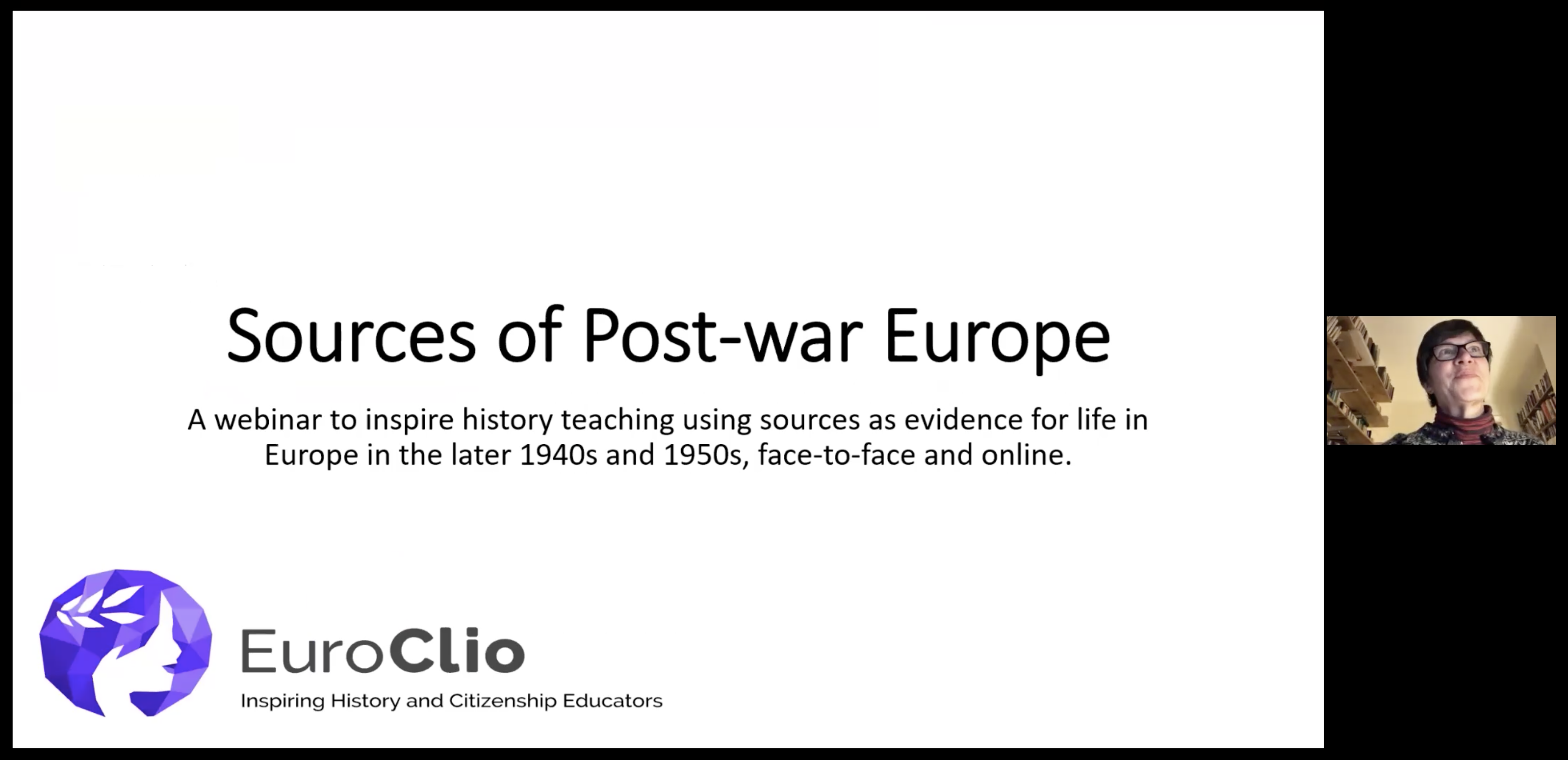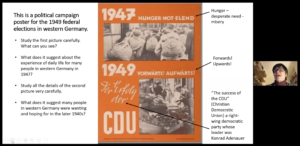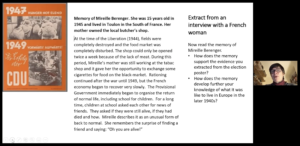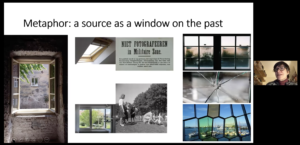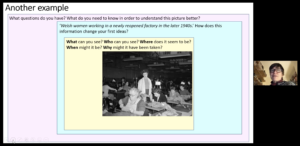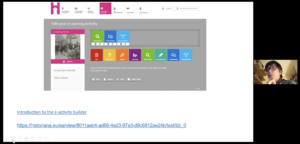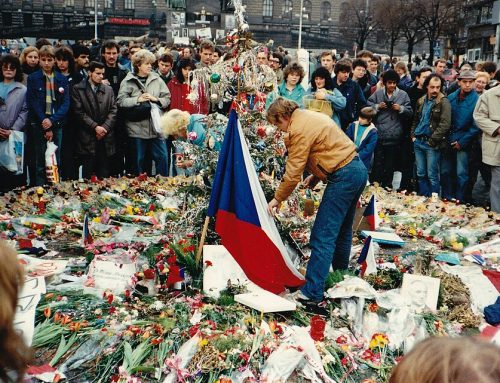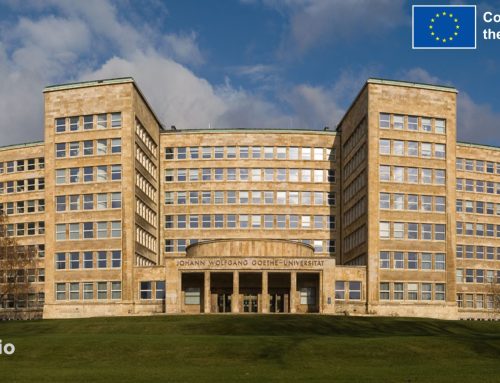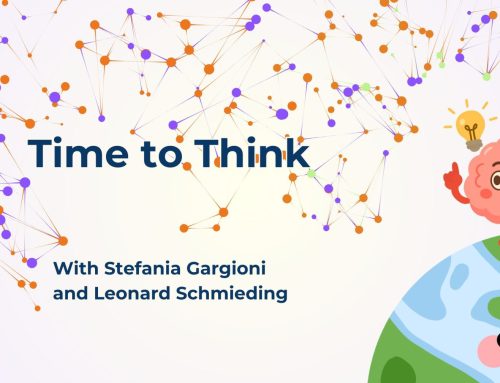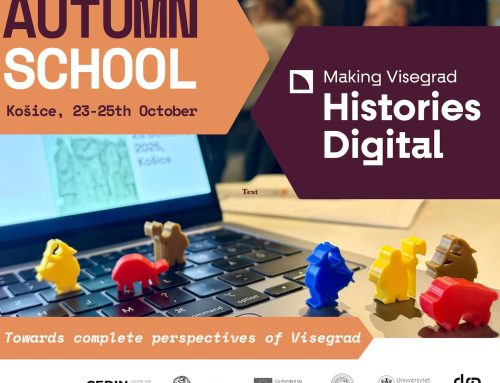On December 9th, EuroClio ambassador Helen Snelson kicked off the four-part webinar series on mastering the art of developing eLearning Activities on Historiana. By using source material on post-war Europe, Helen was able to create a meaningful and engaging eActivity for her students. In this article you find the tips and tricks on using source materials as evidence that Helen shared, and get ideas on how to use Historiana in your educational practice.
Historiana is an online portal developed by EuroClio, Webtic and UseMedia with Europeana for and with history and citizenship educators from Europe and beyond. On Historiana you can find ready to use learning activities, multiperspective historical content and digital tools that are all free to use, adapt and share.
What can sources teach your students?
The webinar started off with an insight in how using individual sources can instill a ‘sense of period’ with students. This helps them to feel more secure about their understanding of the past and make sense of historical people and events in a broader context. Helen demonstrated this in her eLearning Activity with a 1949 German election poster, generating a sense of the hunger and hardships, but also the future-oriented mindset of the time. Exercises using single sources to this effect can easily be made in Historiana’s eActivity builder using the question, analysing, or highlighting tool. Helen recommended assigning this eActivity as homework to prepare students for your classes, especially when in-class time is limited.
Afterwards, the webinar concentrated further on using different sets of sources. Helen stressed how different sets of sources, such as maps, pictures, or objects, give us different types of evidence. By really engaging students in these different types of sources, they will discover for themselves what type of information these sets can give them on the historical topic at hand. The comparing and discovering tools in the eLearning Activity are especially suited for this end.
“Fascinating as we all are as history teachers – sometimes, students turn off when we talk at them […]. But actually, because they have really engaged with the source material, they are burning with questions which you can then help them to find some answer to, and their curiosity is aroused.”
(Click on the image to watch) 13:40- 22:41: In this segment, Helen Snelson builds on the previous activity by contrasting the poster with a testimony of a French schoolgirl and demonstrates how to do this as an eActivity in Historiana.
What distinguishes evidence from sources?
When discussing sources in general, Helen pointed out that teachers also need to be very careful about their language, as ‘sources’ and ‘evidence’ are not interchangeable. A source is something a historian can use as evidence to say something specific about the past, but with widely varying degrees of certainty. It is important for teachers to confer the uncertainty inherent to the historical profession, for example by asking students what they can ‘infer’ from a source. When we start using multiple sources, we can show students that one type of source can be corroborated and connected or compared with other sources to create more valid evidence. 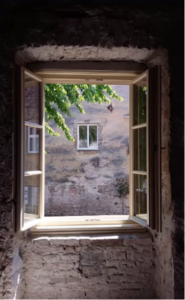
To demonstrate the limitations of sources when studying the past, Helen shared the metaphor of sources as ‘a window to the past’. We are all inside, in the present, looking at the outside world, the past, through the window that is available to us: remaining sources. And when looking out of this window, everyone notices different things. We might choose to focus on the other buildings, the trees, or a bird flying by. Helen: “If we looked through that window, we would all notice different things, because we are all built slightly differently and we observe differently.” As educators, we should remind ourselves and our students that sources are not a representative reflection of the past, they are but fragmentary remains. And when students get a handle on this metaphor, they start to avoid these oversimplifications that a single source would tell them a truth about the past and that’s that.
How to use sources effectively?
Helen also gave some helpful pointers to make the most effective use of sources in the classroom. By showing a well-selected source or set of sources, for example, you can demonstrate how new source material can overturn the popular view on historical events. She illustrated this by using a source that shows how the first shots in the First World War were fired outside of Europe, to overturn the entrenched image of trench warfare. Whenever possible, Helen advised to show the real source and not just a textual copy. This will train your students to pick up clues from context that otherwise might be lost. She further demonstrated how to use a Layers of Inference Diagram to teach students about deconstructing a source.
(Click on the image to watch) 47:02 – 50:41: How to use a Layers of Inference Diagram to deconstruct sources.
Conclusion: How to translate all of this into an eLearning Activity?
At the closing of the webinar, Helen explained how she combined all of her insights into an eLearning Activity on Historiana called ‘How does a historian use sources as evidence’ that she uses in her classroom. She then concluded with her expectations on the future of sources in history education: “I think what’s really exciting about history and history teaching at the moment is the wide array of sources that has been particularly driven by the young academic historians.” With the support of Historiana, you could train the next generation of young academic historians to engage with sources through your history teaching!
(Click on the image to watch) 55:08-59:30: What the final eLearning Activity using sources on Historiana looks like.
Learn More
Want to learn more about using sources as evidence in the (digital) classroom? Watch the full webinar here: https://youtu.be/s3ThUq1hTDs.
Access the ready to use eLearning Activity here: https://historiana.eu/ea/view/8011aab4-ad66-4ad3-97a3-d9c6812ae24b/text/bb_0
Upcoming events
This article is part of a webinar series, in which teacher educators who are experienced in using Historiana show examples of the eLearning Activities that they created, while also diving into a specific topic and discussing a critical thinking skill to teach students.
These events are scheduled next: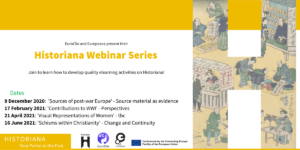
- On February 17th, Bridget Martin (History Teacher, International School of Paris) will be focusing on the Contributions to WWI and talking about perspective. (register here)
- On April 21st, Jim Diskant (History Teacher retd.) will be looking at Visual Representation of women (Thinking skill TBA). (register here)
- On June 16th, Gijs van Gaans (Teacher Trainer, Fontys Tilburg) will be examining Schisms within Christianity and discuss change and continuity. (register here)
This article is written as part of the Europeana DSI4 project co-financed by the Connecting Europe Facility of the European Union. The sole responsibility of this publication lies with the author. The European Union is not responsible for any use that may be made of the information contained therein.
Written by Mechteld Visser.

